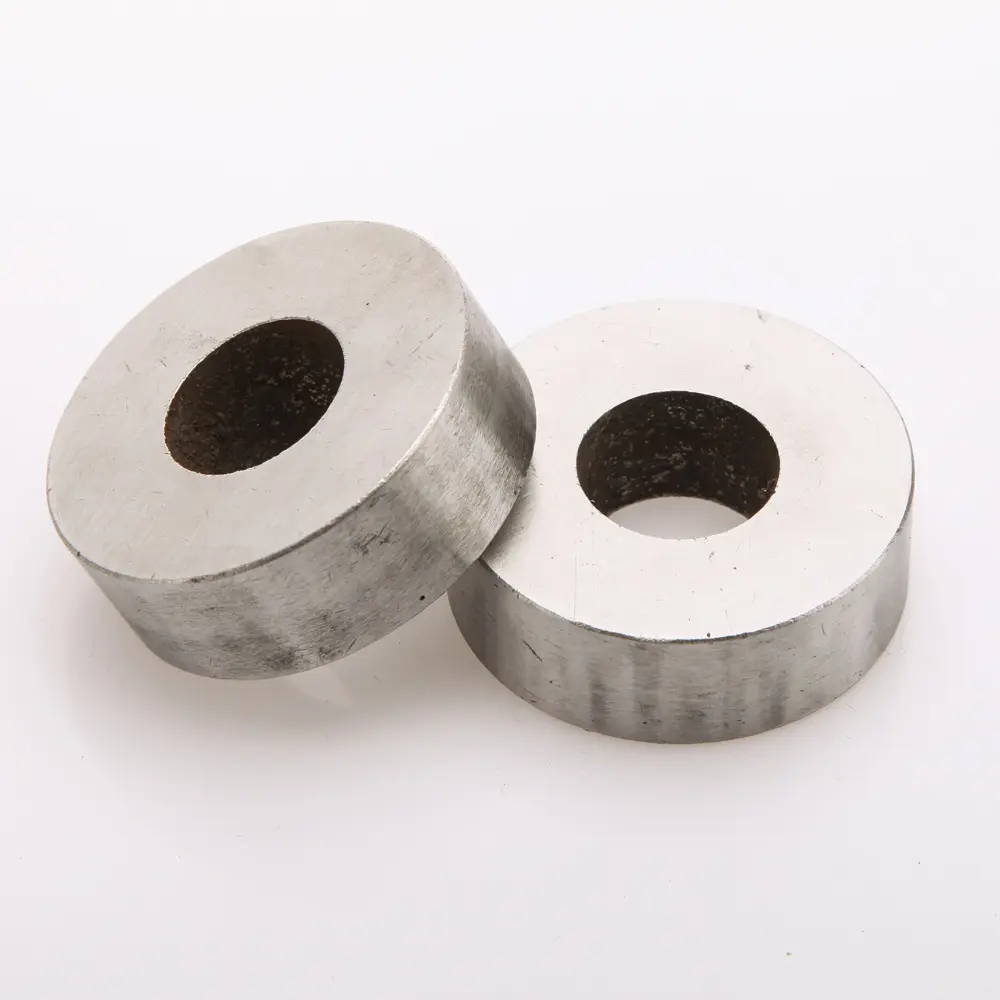
The main role of magnets in audio is to generate a constant magnetic field with a certain magnetic induction intensity, which plays an auxiliary role in vibration. The voice coil of the speaker is placed in a magnetic field. When the audio current passes through the voice coil, this current will be affected by the force of the magnetic field. The direction of the current changes continuously.
The electromagnet also keeps moving due to the “forced movement of the energized wire in the magnetic field”. The back and forth movement causes the paper cone to vibrate back and forth, thus producing sound. The speaker center magnet is one of the key components of the speaker and is mainly responsible for generating a magnetic field. According to different materials, the speaker center magnet is mainly divided into permanent magnets, electromagnetic magnets and soft magnets.
Permanent magnet steel: The material of permanent magnet steel is usually neodymium iron boron or cobalt, which has a stable magnetic field and high magnetic energy product. Compared with the other two types of magnets, permanent magnets have higher sensitivity and response speed, so they are widely used in tweeters and midrange speakers. Electromagnetic magnet steel: Electromagnetic magnet steel is composed of electromagnets and soft magnets and has high magnetic permeability and saturation magnetic induction intensity.
The strength of its magnetic field can be adjusted by adjusting the size of the current, so it is generally used in loudspeakers with larger volumes. Soft magnet: Soft magnet is a material with strong magnetic permeability, which can be adjusted by the strength of the magnetic field. Its magnetic permeability is high and the distortion of sound is small, so it is often used in professional-level speakers with high sound quality requirements.
Neodymium Magnet (NdFeB):
NdFeB magnet was discovered by Masato Sato of Japan’s Sumitomo Special Metals Company in 1982. The magnet’s magnetic energy product (BH) max is larger than that of cobalt magnets, which was the material with the largest magnetic energy product in the world at that time. Later, Sumitomo Specialty Metals successfully developed the powder metallurgy method, and General Motors successfully developed the melt spinning process, which can prepare NdFeB magnets, which are currently the most powerful permanent magnets and the most commonly used rare earth magnets.
Neodymium magnets are also called NdFeB magnets. They are permanent magnets with an Nd2Fe14B tetragonal crystal structure composed of an alloy of neodymium, iron and boron. Its main components are the rare earth elements neodymium (Nd), iron (Fe) and boron (B). Neodymium is part of this material, known as the “rare earths.” Their magnetism is the most powerful, and this greater power can exist within a few centimeters of magnet.
High temperature resistance and high hardness are the characteristics of neodymium magnets. The temperature of neodymium iron boron magnets is higher than that of ordinary magnets. No matter which strong magnet material is used, its performance is better than ordinary magnets, because NdFeB magnets will increase the density of rare elements, so their hardness will be higher than ordinary magnets. During use, the shattering of the magnet due to collision is greatly avoided, while ordinary magnets are fragile and their appearance will rust for a long time.
However, the price of neodymium magnets is also the highest, but its price is directly proportional to itself. New technologies are already planned to develop neodymium magnets and allow them to reach higher maximum temperatures. Many scientists are working on solutions to increase the quality and strength of these magnets. They will definitely find answers in the near future involving engines and energy technologies. ‘s laboratory cannot function without neodymium magnets. Small magnets with extra power are used, thus increasing the speed and power of the hard drive or amplifier.
Ferrite
Ferrite magnets are sintered from iron oxides and other compounds, with three primary types: permanent ferrite, soft ferrite, and gyromagnetic ferrite.Permanent ferrite, also called ferrite magnet, is the small black magnet we usually see. Its raw materials mainly include iron oxide, barium carbonate or strontium carbonate.
After magnetization, the intensity of the residual magnetic field is very high and can be maintained for a long time. Commonly used as permanent magnet material. For example: speaker magnet; soft ferrite is prepared and sintered from iron oxide and one or several other metal oxides. It is called soft magnet because when the magnetizing magnetic field disappears, the residual magnetic field is very small or almost non-existent. Usually used as a choke, or the core of a medium frequency transformer.
This is completely different from permanent ferrite; gyromagnetic ferrite refers to a ferrite material with gyromagnetic properties. There are several advantages to choosing ferrite magnets: 1. Low cost, low price, and very cheap raw material costs. 2. Good temperature stability. It can be used at temperatures of -40 degrees Celsius and +350 degrees Celsius. 3. Does not rust.
Considerations When Purchasing Speaker Center Magnets:
1.Matching Magnet Material: Ensure that the magnetic steel material in the center of the speaker is suitable for the speaker type and size to achieve optimal performance.
2.Magnet Power: Select the magnet’s thickness based on the speaker’s power requirements, with thicker magnets for high-power speakers and thinner, more sensitive magnets for low-power speakers.
3.Quality: Consider factors like brand, material, manufacturing process, size, and shape when choosing a speaker center magnet to ensure product quality and longevity.”
